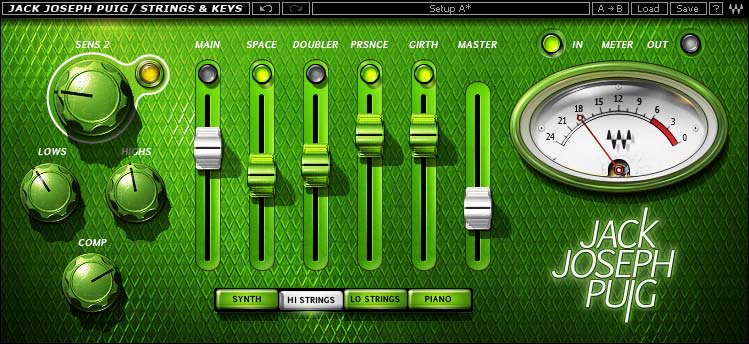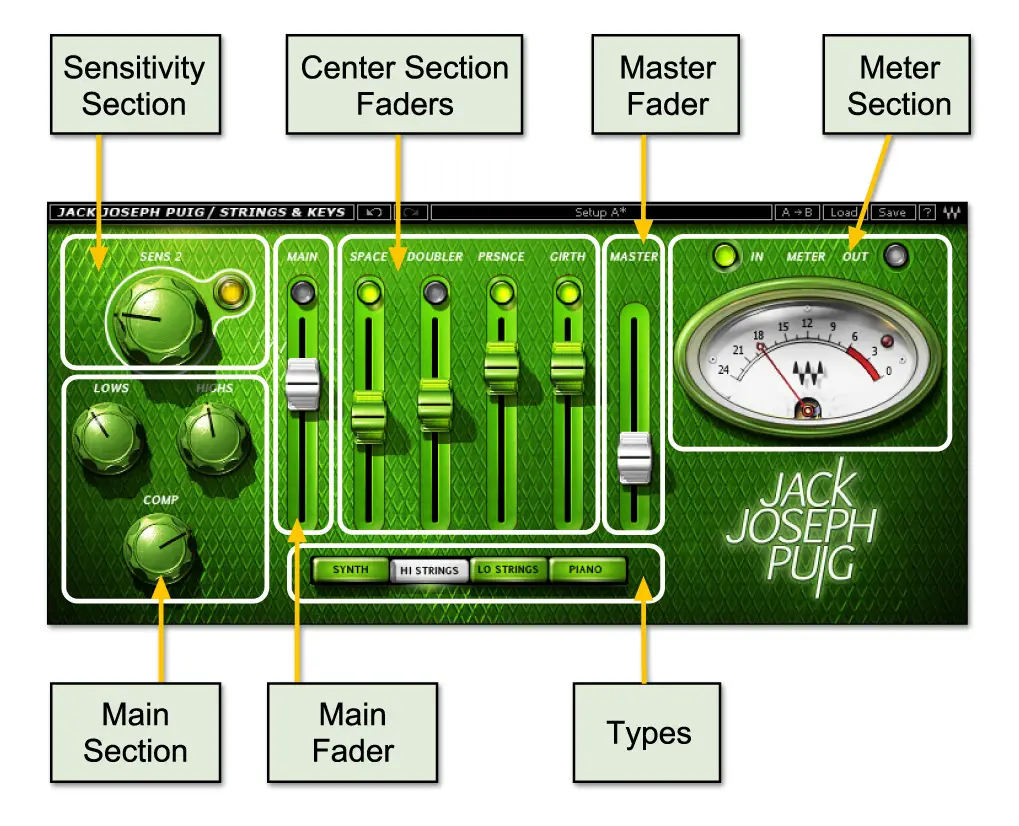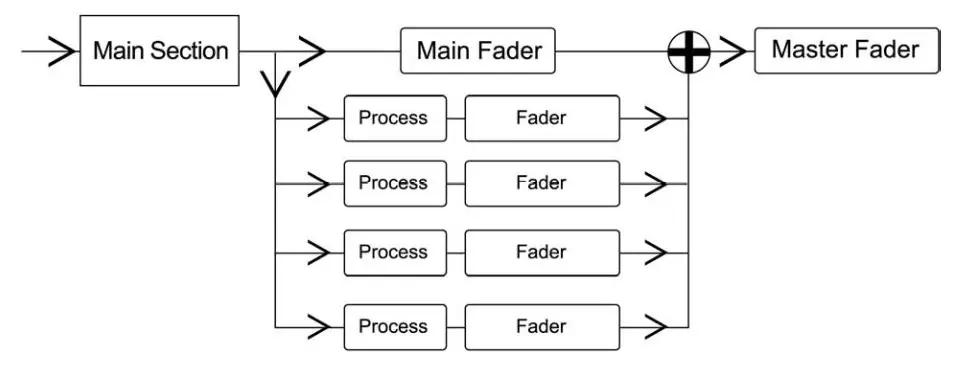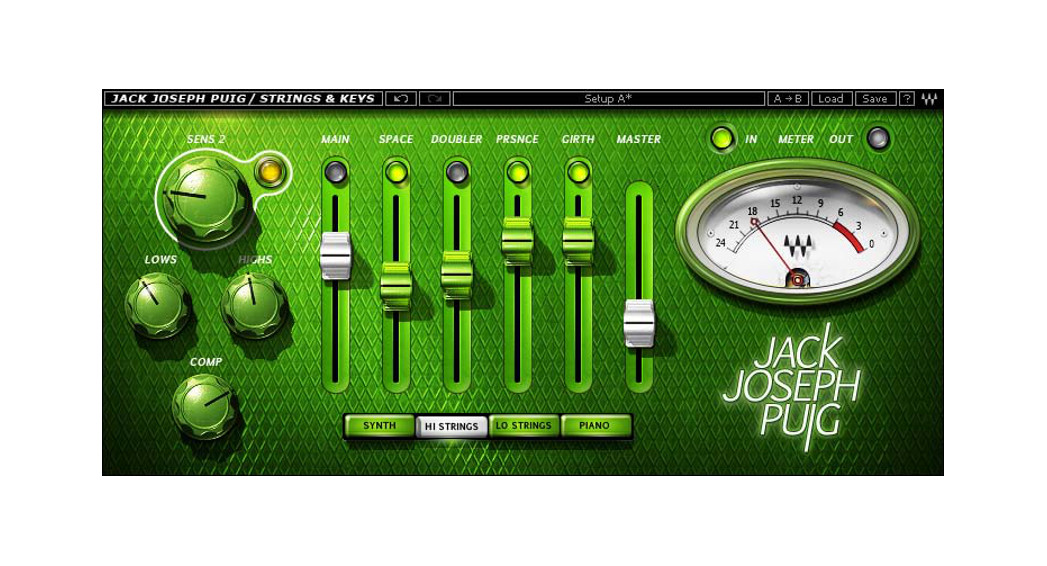 WAVESJJP STRINGS &KEYSUser Guide
WAVESJJP STRINGS &KEYSUser Guide

Chapter 1 – Introduction
Welcome
Thank you for choosing Waves! In order to get the most out of your new Waves plugin, please take a moment to read this user guide.To install software and manage your licenses, you need to have a free Waves account.Sign up at www.waves.com. With a Waves account, you can keep track of your products, renew your Waves Update Plan, participate in bonus programs, and keep up to date with important information.We suggest that you become familiar with the Waves Support pages: www.waves.com/support. There are technical articles about installation, troubleshooting, specifications, and more. Plus, you’ll find company contact information and Waves Support news.
Product Overview
The Waves Signature Series is our exclusive line of application-specific audio processors, created in collaboration with the world’s top producers, engineers, and mixing engineers. Every Signature Series plug-in has been precision-crafted to capture the artist’s distinct sound and production style. For experienced and aspiring audio professionals alike, the Waves Signature Series allows you to dial up the sound you’re looking for quickly, without interrupting the creative flow. The JJP Collection consists of 6 plug-ins, each of which is designed to handle a specific production task:
- JJP Vocals
- JJP Drums
- JJP Bass
- JJP Guitars
- JJP Cymbals & Percussion
- JJP Strings & Keys
Components
WaveShell technology enables us to split Waves processors into smaller plug-ins, which we call components. Having a choice of components for a particular processor gives you the flexibility to choose the configuration best suited to your material.The Waves JJP Strings & Keys plug-in has two components:
- JJP Strings & Keys m>s – Mono into Stereo out component
- JJP Strings & Keys Stereo – Stereo into Stereo out component
A Few Words from JJP
“When I’m dealing with strings and keyboard parts, in general, I want them to be radiant and beautiful. I want to shape the tonality to fit what the song needs to be, so when it comes out of the speaker, it’s on another level. With JJP Strings & Keys, it’s set up so you can really follow your instincts, to bring out the complexities in your keyboard parts and orchestrations. You might want to use some delay and make it wider, or add a little air for a more ambient feel. Sometimes you’ll want it dry and in your face. Whatever I do, it has to serve the song.”
Chapter 2 – Quickstart Guide
- Insert the JJP Strings & Keys plug-in on the track you wish to process.
- Choose the Type according to your source: Synth, Hi Strings, Lo Strings, or Piano.
- Adjust the Sensitivity control until you achieve proper (yellow) levels, as indicated by the Sensitivity LED.
- Adjust the various Main Section controls located below the Sensitivity knob to shape your sound.
- Use the Center Section faders to adjust the sonic color.
- If the Clip LED lights up repeatedly or stays lit, lower the Output level fader accordingly.
JJP has optimized the default settings for each Type. These settings may or may not require additional adjustment once optimal Sensitivity has been achieved.
Chapter 3 – Controls, Concepts, and Terminology

TypesThe JJP Strings & Keys plug-in includes four Types to address a range of source materials: Synth, Hi Strings, Lo Strings, and Piano.
Sensitivity SectionThe Sensitivity LED’s 3 colors indicate when appropriate levels are reached:
- LED Off (too low)
- Green (good)
- Yellow (optimal)
- Red (very hot)
Turn the Sensitivity Control until the LED lights up. For best results, use the section of your track with the highest peaks.In most cases, the Sensitivity LED indicates that your levels hit the processor in a way that will give you the intended output result. However, it’s important to keep in mind that optimal results for your source material may be achieved even when the Sensitivity LED does not display “optimal” levels (yellow). As always, trust your ears.Please note: Since the Sensitivity ranges of the Hi Strings, Lo Strings, and Piano differ from the default settings, they are labeled “Sens 2” for automation purposes.Main Section The Main Section gives you control over basic dynamics & EQ. All processing is influenced by this section. The JJP Strings & Keys mono-to-stereo component includesa Pan control.Main Fader The Main Fader controls the Main Section direct level.Center Section FadersThe Center Section faders represent auxiliary returns with additional processing, sent from the Main Section, pre-fader. Above each fader, there is a dedicated mute button.It may help to think of each plug-in as a mini-mixing console.Please note: Certain faders may change, depending on the selected Type. This is intentional and represents the actual processing JJP uses for that source or instrument.
Master FaderThe Master fader controls the master output signal level.Meter SectionThe Meter Switch toggles meter monitoring between input and output modes. The Clip LED lights up when levels exceed 0 dBFS; click to reset.
Signal Flow

WaveSystem ToolbarUse the bar at the top of the plugin to save and load presets, compare settings, undo and redo steps, and resize the plugin. To learn more, click the icon at the upper-right corner of the window and open the WaveSystem Guide.
References
[xyz-ips snippet=”download-snippet”]

